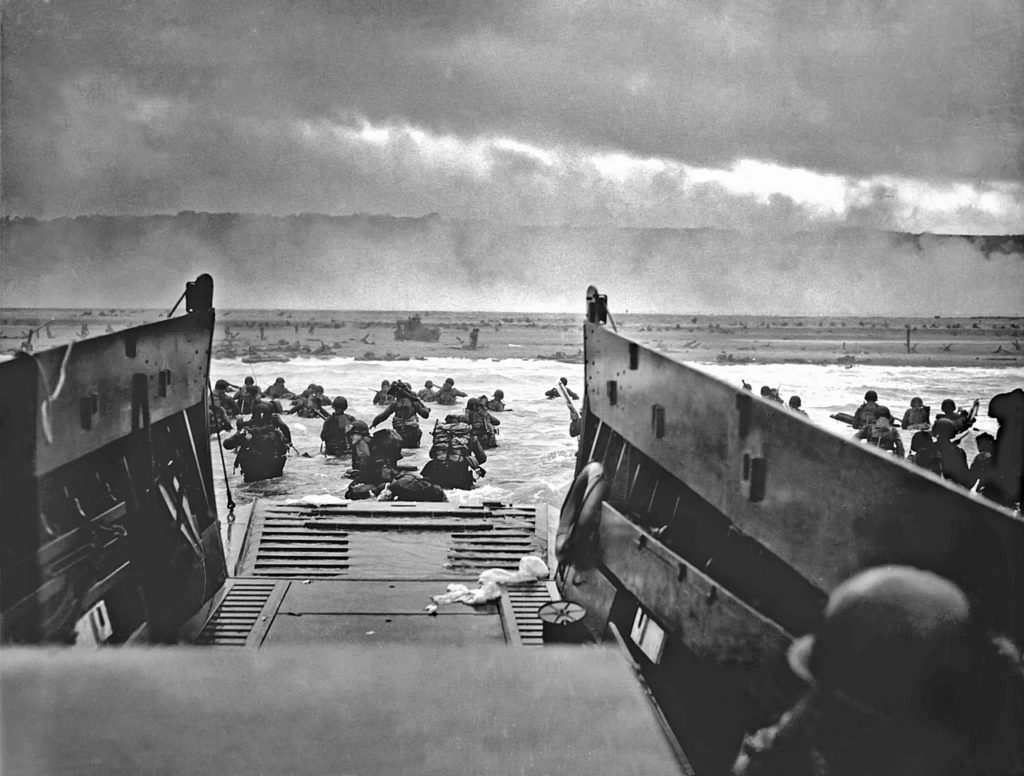On June, 6th, 1944, the Allied forces consisting of Great Britain, the United States, France, and Canada, launched an attack on the German forces on the shores of Normandy, France. Over 150,000 soldiers, under the leadership of the Supreme Commander of the Allied Forces Dwight Eisenhower, landed successfully in Normandy and cleared the way for more troops to land safely in what will forever be known as the invasion of Normandy, or “D-Day”.
Before the invasion of Normandy
Under the leadership of the Nazi dictator, Adolf Hitler, Germany took over France and was planning to move on to Britain and the rest of Europe. Of course, the United States and Britain were not going to allow that, so the Allied Powers’ action plan had to be switched to offense. The first step of being offensive was to fight the Germans out of France.
To get ready for this battle, the Allied Powers had to gather thousands of soldiers in Britain as well as a massive amount of equipment. Bombings and attacks on the German territories were increased to keep the German forces busy and distracted, so they could not stop the troops that were going to land on the shores of Normandy. To achieve that kind of distraction, the Allies dropped more than 1,000 bombs on strategic German targets every day. They destroyed airfields, railroads, bridges, and more!
Unexpected surprises for both sides
Those intensive attacks, as well as the gathering of the massive number of troops, made the Germans suspect the upcoming attack the Allies were planning. However, German leaders did not know where this attack would happen. This served as the Allies’ chance to deceive the Germans, so they attempted to make things look like they were planning to attack an area north of Normandy. This was a big surprise for the Germans who knew about the attack and still could not block it!

As for the Allies, leaders who spent months planning the invasion were about to cancel it because of how bad the weather got. Eisenhower decided to go through with the invasion regardless of the bad weather, which turned out to be the best decision he could have made. The weather did affect the Allied troops a little, but it ended up helping them more than anything as the Germans did not expect the Allies to attack in such bad conditions!
The Allies successfully invade Normandy
The troops from the first wave of the invasion of Normandy were absolute heroes. Those brave men jumped out of planes into the darkness of the night with parachutes. They destroyed important targets and took control of bridges to help the coming waves of the attack to land safely on the shore. The only protection these brave men had was from decoy dummies thrown from the planes to draw the attention of German defenses and fire while they reach the ground and complete their mission.
The second wave of this attack was for planes to drop bombs on German defense points and destroy them. This was followed by the attack of the warships from the water. As the third wave started, the French resistance crippled the Germans even more by cutting out the telephone wiring all over the city. Nothing was left except for the main invasion troops to launch their attack. 150,000 soldiers on board 6,000 ships arrived at the Southern shore of Normandy and fought bravely for days against German troops to finally successfully get them all out of France. U.S. forces landed on Utah and Omaha beaches, while British forces landed on Gold, Juno, and Sword beaches. Omar Bradley served as a general from the United States during the invasion, whereas Bernard Montgomery and Trafford Leigh-Mallory served as generals from Britain. They fought against the German generals Erwin Rommel and Gerd von Rundstedt.
Back to World War II topics
